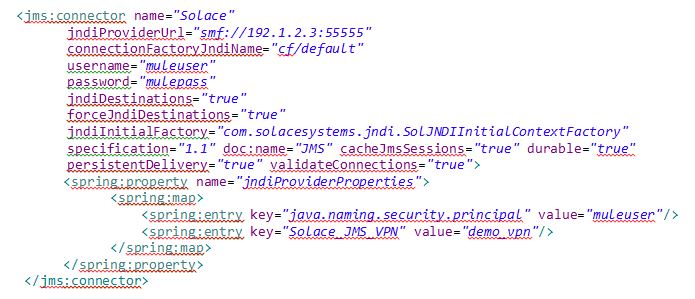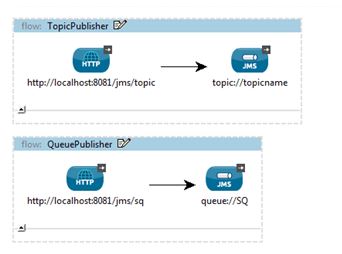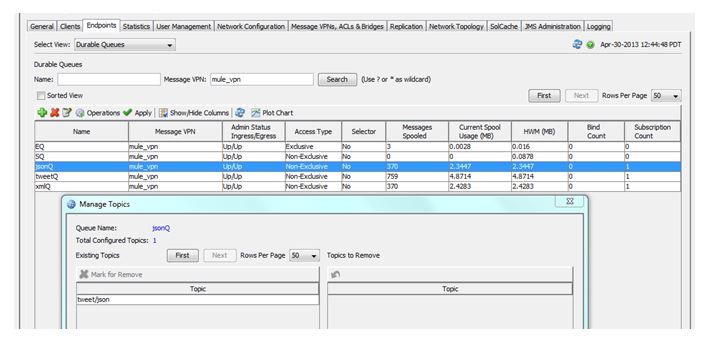I’ve been playing around with MuleStudio from MuleSoft lately, and am very impressed with how easy it is to create integrations with the Eclipse-based IDE. The product comes with a long list of commonly needed endpoint connectors for talking to files, databases, HTTP, IBM WebSphere MQ, or even end systems like SAP.
This was all it took to customize the included JMS Endpoint to work with a Solace appliance, which we make available in the public Internet as a messaging service:

 With the Solace JMS endpoint configured, the rest was “one handed programming.” Dragging and dropping icons and connecting endpoints from the pallete was quick and easy, and before I knew it I was running a REST API for publishing messages to Solace topics and queues.
With the Solace JMS endpoint configured, the rest was “one handed programming.” Dragging and dropping icons and connecting endpoints from the pallete was quick and easy, and before I knew it I was running a REST API for publishing messages to Solace topics and queues.
After that, I wanted to explore further and make a more “cloudy” demo so I picked up on the available Cloud Connectors which include integration components for Amazon, Salesforce.com, Facebook, and Google.


All that’s left to do is to wire up an analytics engine to pore over the tweet-stream and figure out by sentiment analysis what people are thinking and saying about Solace messaging. A quick search on MuleSoft’s APIhub shows there are at least 42 ways to do that too!
Explore other posts from category: DevOps

 Solace
Solace
